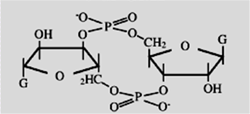Karatan Lab
Jesse Marino
Ece Karatan
karatane@appstate.edu
Appalachian State University
Department of Biology
Rankin Science North
319 (Office), 303 (Lab)
828-262-6742

The research I am a part of, is centered around the cyclic nucleotide 3’,5’-Cylic diguanylic acid (c-di-GMP). This compound is a common signaling molecule among prokaryotes, and it has been proposed to act as a second messenger involved in pathways regulating bacterial growth on surfaces. Two protein domains have been identified that are associated with controlling intracellular c-di-GMP concentrations. Proteins containing a GGDEF domain have been shown to exhibit diguanylate cyclase activity, catalyzing the synthesis of c-di-GMP from two GTP molecules, and proteins containing an EAL domain have been shown to act as phophodiesterases, degrading c-di-GMP.
An increase in intracellular levels of c-di-GMP in Vibrio cholerae have been shown to correlate with the formation of a biofilm, a surface attached community of microbes dispersed in a polysaccharide matrix. Thus, c-di-GMP has been suggested to positively regulate biofilm formation in V. cholerae. Several GGDEF and EAL domain containing proteins have been shown to effect biofilm formation in V. cholerae; however, little is known about the exact molecular action of c-di-GMP and its specific molecular targets. The abundance and the highly conserved nature of GGDEF and EAL domain proteins suggests multiple signals may be integrated to elucidate a response.
In my work, an interdisciplinary approach between biology and chemistry is taken in order to study the role of c-di-GMP in V. cholerae. Currently, in collaboration with John Tomlinson in the Department of Chemistry, I am working on a project that uses HPLC to test if proteins exhibit diguanylate cylclase/ phosphodiesterase activity. Additionally, in collaboration with Claudia Cartaya-Marin in the Department of Chemistry, I am working towards the total synthesis of c-di-GMP, following reported methods. The goal of this project is to provide a sufficient stock of c-di-GMP so that it’s action in V. cholerae and the signal transduction pathways that use this molecule in this organism can be further studied.
